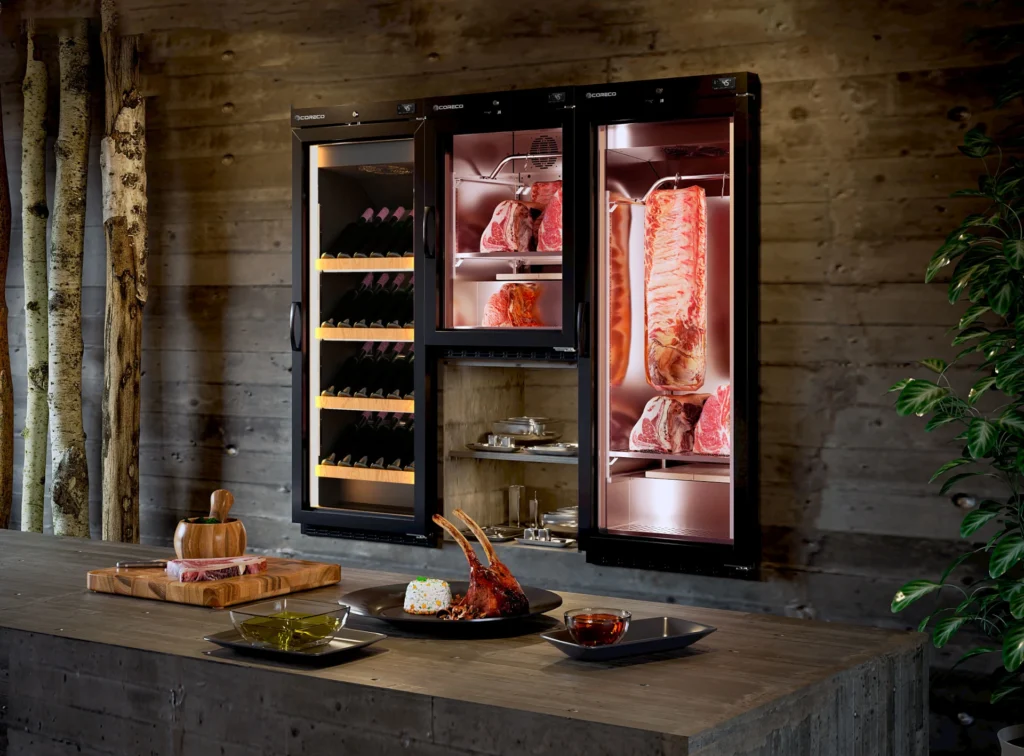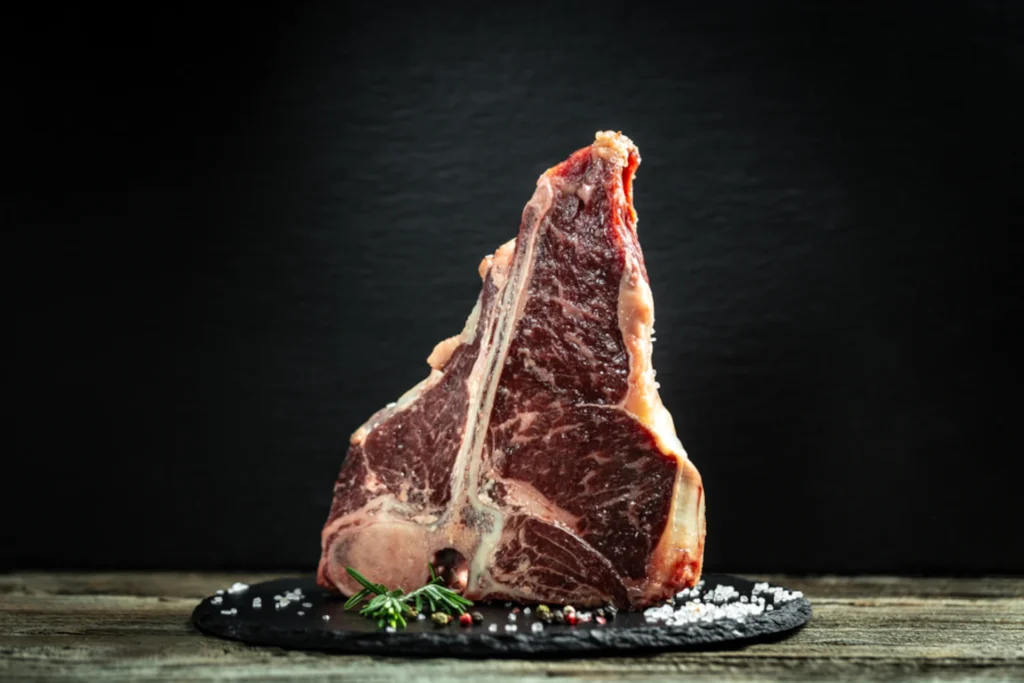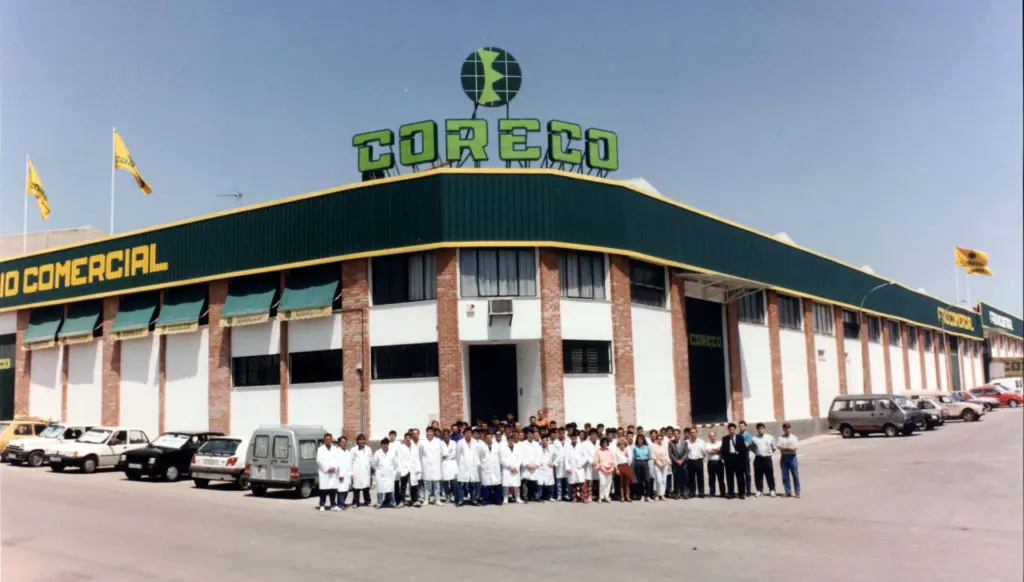Welcome and thank you for visiting the Coreco, S.A. blog dedicated to our Gourmet range. With over 35 years of experience in the manufacture of refrigeration and freezing equipment for the Horeca, laboratory and retail sectors, we know the importance of keeping your equipment in optimum condition. Today we share with you a complete guide to cleaning and sanitising your Dry Aged cabinet, ensuring the quality and safety of the meat you age in it.
Why is it important to keep your Dry Aged wardrobe clean?
Keeping your Dry Aged cabinet clean and in good condition is crucial to ensure the quality and safety of the meat you age in it. Not only is it a matter of hygiene, but it also directly influences the taste and texture of the final product. Why is this cleaning process of a Dry Aged cabinet so important? Let's find out.
Cleaning benefits
Proper cleaning and maintenance of a Dry Aged meat maturation cabinet is crucial for several reasons:
- Quality control: A dirty maturation cabinet can harbour bacteria, mould and other contaminants that can negatively affect the quality and safety of the meat. Keeping the cabinet clean helps to ensure that meat matures in a controlled and healthy environment.
- Optimisation of the maturation process: Ideally, temperature, humidity and airflow within the cabinet must be strictly controlled for maturation to take place properly. A dirty cabinet can alter these critical parameters, preventing the meat from reaching its full flavour and texture potential.
- Preserve odours and flavours that are sought after: Meat, fat and other residues can generate unpleasant odours and impart undesirable flavours to the matured meat. Keeping the cabinet clean prevents these problems from affecting the final quality of the product.
- Prolongation of the service life of the equipment: Regular cleaning and maintenance helps to preserve the good condition of the ripening cabinet, preventing damage and prolonging its life span.
We would like to emphasise that the scheduled and constant cleaning of the Dry Aged cabinet is essential to ensure quality, food safety and the optimal development of the meat maturation process, as well as to maintain the equipment in good condition in the long term.
Risks of not cleaning properly
Failure to properly clean the Dry Aged cabinet can lead to a build-up of bacteria and mould, which can contaminate the meat and make it unsafe to eat. On top of this, bad odours can permeate the meat, ruining its flavour.
Failure to keep a Dry Aged cabinet clean and healthy can lead to a number of risks, including:
- Meat contaminationWe have seen that the presence of bacteria, moulds and other contaminants certainly affects the quality and general condition of the meat. This can lead to a situation where instead of matured meat we have contaminated meat, which can be dangerous for our health.
- Disruption of the maturation processA dirty cabinet can alter the critical parameters of temperature, humidity and airflow within the cabinet, which can affect the proper development of the meat. This can result in meat that does not reach its full flavour and texture potential..
- Unwanted smells and tastesMeat, fat and other residues can generate unpleasant odours and impart undesirable flavours to the matured meat. This can negatively affect the consumer experience.
- Prolongation of equipment lifetimeRegular cleaning and maintenance helps to preserve the good condition of the ripening cabinet, preventing damage and prolonging its life. Without proper maintenance, the cabinet may be damaged and become unusable..
- Fire hazardsThe accumulation of debris and lack of cleanliness can increase the risk of fire inside the cabinet. This is of particular concern in a commercial environment where safety is paramount..
Don't take risks
At Coreco we want to raise awareness that not keeping a Dry Aged cabinet clean and healthy can compromise the quality and safety of the meat, affect the maturation process, generate unwanted odours and flavours, and reduce the lifespan of the equipment.
Ultimately, keeping a clean and well-maintained Dry Aged cabinet is non-negotiable. It is essential to obtain high quality, mature meat that is safe to eat. No risks should be taken in this regard.
The process of cleaning a Dry Aged cabinet
Materials needed for cleaning
Basic tools
To clean your Dry Aged cabinet, you will need some basic tools such as rubber gloves, microfibre cloths, non-abrasive sponges and small brushes.
Recommended cleaning products
Use mild cleaning products, preferably those that are food safe. Avoid products with strong odours that can be transferred to meat.
Preparation before cleaning
Switch off and empty the cabinet
Before starting cleaning, be sure to unplug the cabinet and remove all meat and shelves. This will allow for a more thorough and safer cleaning.
Initial inspection
Conduct an initial inspection to identify areas with build-up of debris or mould. This will help you to better plan your cleaning.
Steps to clean the interior of the Dry Aged cabinet
Surface cleaning
Start by cleaning all internal surfaces with a microfibre cloth and a mild cleaner. Be sure to get into all nooks and crannies.
Disinfection
After cleaning, disinfect all surfaces with a food-safe disinfectant. This will kill any remaining bacteria or mould.
Drying
It is an essential task to dry the inside of the cabinet thoroughly to avoid moisture build-up, which can encourage the growth of mould and mildew.
Cleaning of grills and trays
Waste disposal
Remove all residues from the grills and trays with a small brush and a non-abrasive sponge.
Washing and disinfection
Wash the grills and trays with hot soapy water, then disinfect them before putting them back in the cabinet.
Drying and installation
Make sure that the grills and trays are completely dry before relocating them in the cabinet.
Maintenance of the ventilation system and filters
Inspection and cleaning of fans
Check and clean the fans to ensure that they are operating properly and are not clogged with dust or debris.
Filter replacement
Change the filters regularly to maintain a clean and constant airflow inside the cabinet. Looking for more useful tips? Don't forget to subscribe to our newsletter to receive the latest updates.
Care of sensors and controls
Cleaning of temperature and humidity sensors
Carefully wipe the temperature and humidity sensors with a soft cloth to ensure that they are working properly.
Calibration verification
Check the calibration of the sensors to ensure accurate readings that will maintain optimal conditions for Dry Aged.
External cleaning of the cabinet
Cleaning of the structure
Wipe the outside of the cabinet with a damp cloth and a mild cleaner to keep it presentable and dust-free.
Polishing of metal surfaces
If the cabinet has metal surfaces, you can polish them to maintain their shine and protect them against corrosion.
Recommended frequency of cleaning
Daily cleaning
Perform light daily cleaning to remove debris and maintain basic hygiene.
Weekly cleaning
Further cleaning can be done on a weekly basis to keep all parts of the cabinet in good condition.
Monthly cleaning
On a monthly basis, do a thorough cleaning and disinfection of all parts of the cabinet to ensure an optimal environment for the Dry Aged.
Tips to keep your wardrobe cleaner for longer
Use of protective covers
Use protective covers on grills and trays to reduce residue build-up and facilitate cleaning.
Proper food storage
Be sure to store meat so that it does not drip or touch the surfaces of the cabinet directly.
Common mistakes when cleaning the Dry Aged wardrobe
Use of non-recommended products
Avoid using cleaning products that are not food safe, as they may leave hazardous residues.
Omitting important parts
Do not overlook hard-to-reach or small areas, as they can become sources of contamination.
Troubleshooting common problems in Dry Aged cabinet cleaning
Persistent bad smells
If odours persist, try cleaning with a solution of baking soda and water to neutralise them.
Temperature problems
If the cabinet is not maintaining the proper temperature, check the sensors and ventilation system to identify problems.
Expert tips for maintaining the Dry Aged wardrobe
Constant monitoring
Experts recommend constant monitoring of temperature and humidity to ensure optimal conditions.
- Temperature and humidity controlMaintaining temperature and humidity parameters within the recommended ranges (generally 1-2°C and 55-70% humidity) is crucial to prevent the growth of micro-organisms.
- Adequate ventilationThe constant air flow around the pieces of meat favours maturation and prevents the growth of bacteria and unpleasant odours surrounding the product.
- Use of UV lightSome maturation cabinets have UV lamps that help sterilise the interior and prevent bacterial growth.
Common problems with meat
- Inadequate meat preparationFailure to properly prepare the meat before placing it in the cabinet, removing unwanted fat and tissue, can affect the maturation process.
- Insufficient monitoringFailure to closely monitor maturation progress and make necessary adjustments may result in an inferior final product.
- Irregular rotation: Regularly rotating meat can help prevent the build-up of waste and maintain a cleaner environment.
Thank you for your trust in Coreco
At Coreco, S.A., we are committed to quality and innovation in the refrigeration industry. We hope you have found this guide useful in keeping your Dry Aged cabinet in top condition. If you have any questions or require further information, please do not hesitate to contact us. For more information about our products and services, please visit our website.
FAQs
You should do a light cleaning daily, a more thorough cleaning weekly and a full cleaning monthly.
Use mild, food-safe cleaning products, avoiding those with strong odours or harsh chemicals.
Yes, vinegar is a natural, food-safe cleaner that can help disinfect and neutralise odours.
Try cleaning with a solution of baking soda and water, and make sure all surfaces are completely dry.
Check fans and filters to make sure they are not clogged, and consider replacing filters if necessary.











